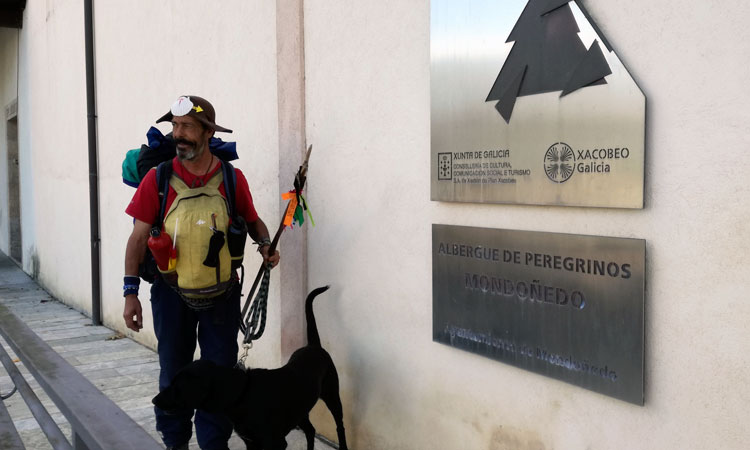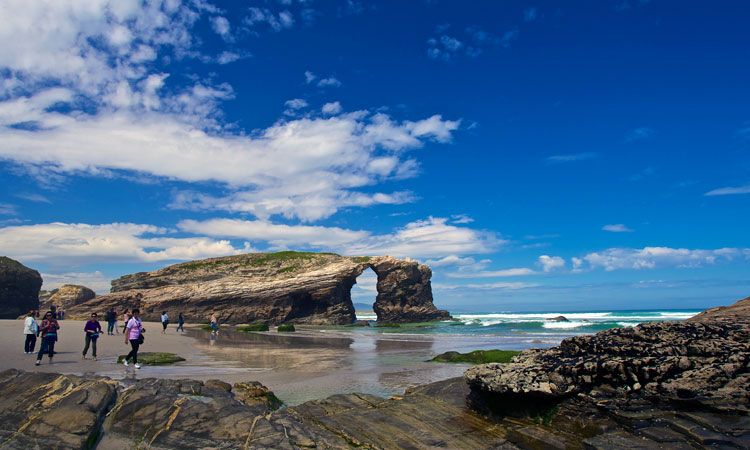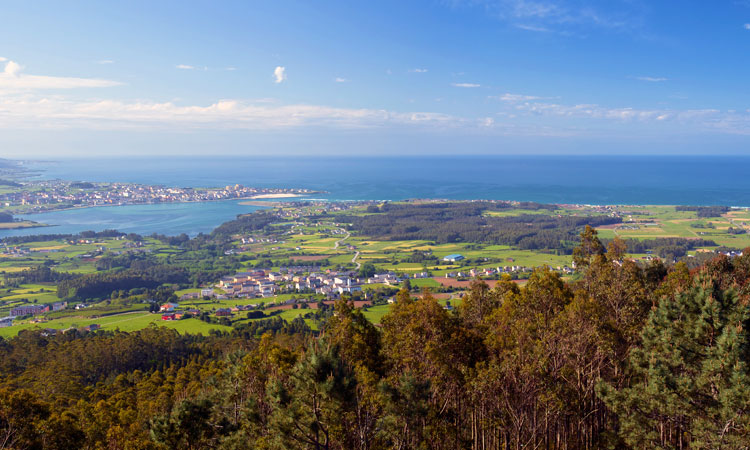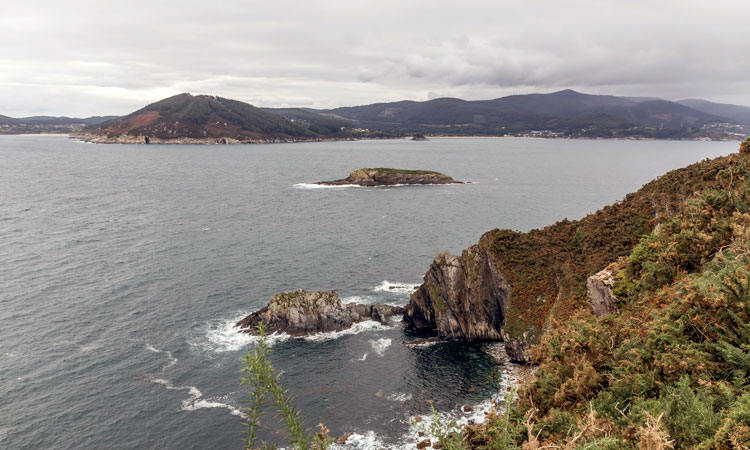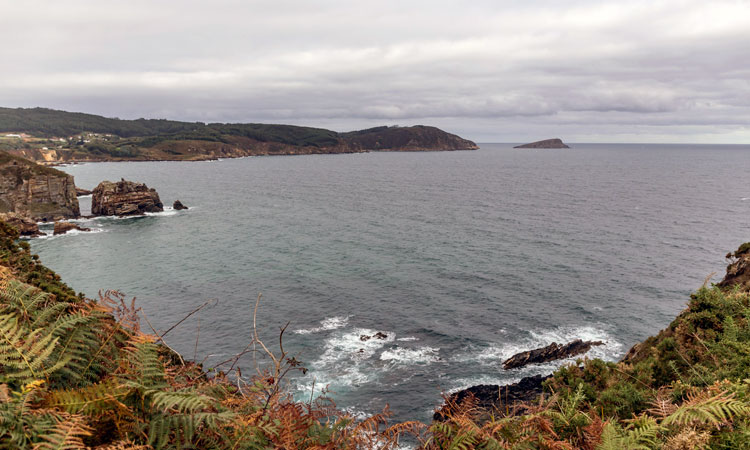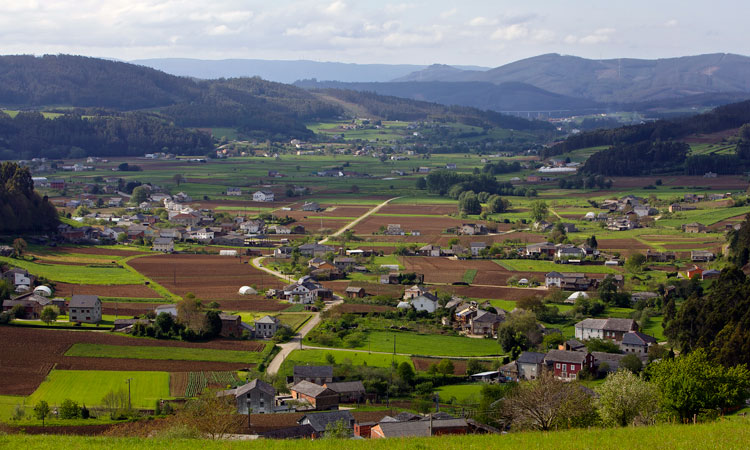This is a historical pilgrimage route to Santiago. Both the variant of Ribadeo as well as that of Trabada will lead the way to explore the territory and our most typical gastronomy.
Recommended season: Spring
Time: 4 days
We take you through:
- Public hostel of Ribadeo
- Public hostel of Vilela (Ribadeo)
- Municipal hostel de Gondán (Barreiros)
- Municipal hostel de Vilanova de Lourenza
- Municipal hostel de Mondoñedo
Did you know that?…
The Northern Way starts from Irún and after 32 stages and about 875 km, finishes in Arzúa to join the French Way to Santiago de Compostela (40 km). Among all the Jacobean pilgrimage routes, this is the second longest after the Vía de la Plata.
Stops
After the Primitive Way, this route -which passes through the Asturian coast and enters Galicia through the Ribadeo estuary- became very important during the Middle Ages. Maritime pilgrimages were at their peak and in Oviedo, the Jubilee of the Holy Cross began to be celebrated with great devotion among the faithful who afterwards would walk the 198 km distance to the tomb of the Apostle to get another indulgence.
It also attracted devotees from all over the north of the Peninsula, famous people like Francis of Assisi or the Armenian Bishop Martyr of Azerbajan. By land and by sea, it was the entrance for people of northern Europe. It maintained its vitality until the 18th century.
Nowadays in Galicia, there is a variant of Ribadeo and that of Trabada.
In 2015, the North Way was recognised by UNESCO, together with the Primitive Way, as a World Heritage Site, the highest distinction that a cultural asset can receive.
There are 3 essential stops in Ribadeo, among others. If you have stayed overnight in the town, take the opportunity to stroll through the historic area and discover the buildings of Indiana architecture that in 2004 led them to being declared an Asset of Cultural Interest (Bien de Interés Cultural, BIC) with the category of historical complex. Follow the Indiana Route and it will be easier to carry out an order.
In the late 19th century and early 20th century, Ribadeo saw an economic, social, and urban boom. This prosperity was largely due to the returning emigrants from America: the Indianos.
The chocolate tradition of Ribadeo was also inherited from these migrants, which today still continues, innovating their offer with tasty bites such as sea bonboms, made with seaweed. Book an appointment to visit the workshop where they make them.
While walking, you will realise that Ribadeo is a trading capital and around lunchtime, there is the great tradition of wines and tapas among neighbours and visitors. Join this custom before trying the seafood and fish from the area in the local restaurants or bars or choose to go to the seafaring town of Rinlo, about 10 minutes by car (7 km). Its goose barnacles are famous, as in summer they have their own gastronomic feast, or creamy rice with lobster.
The third stop we suggest is the As Catedrais beach, a natural monument with a great wealth of natural beauty. Remember that in summer and Easter you will have to apply for a free authorisation to go down to the beach.
Take advantage of the fact that Trabada is the entrance of the North Way variant in Galicia and try the traditional ‘enfariñada’, a kind of crumbs made with eggs, flour and water, and visit a local craft workshop.
On the way to the next stop is the Fraga da Belosiña, with recreational area to one side of the river. For those who are more active, we recommend the Fraga da Vilapena route (PRG-85), along which you will find a great diversity of native trees.
In season, try the winkles (also known as ‘minchas’), the meat dishes of the area and for dessert, exclusive sweets of the municipality like the carolón.
Complete the stay by going to the ‘Galician Stonehenge’. The archaeological site of A Roda (Bronze Age) is unique in Galicia and in Spain. It is also worth discovering the natural and archaeological area of Santo Estevo do Ermo, with chapel, forest and waterfall, as well as fountains with healing properties and the footprint of the horseshoe of Saint James the Apostle’s horse.
The fertile lands of the Lourenzá valley are the source of its famous beans with Geographical Indication (GI). With the support of the local cooperative, producers will tell you what their daily work is like, and if you want to delve a little more, the benefits that the social economy provides them with. We encourage you to come during the harvest period (September) and stay for weekend for the Festival of the Bean (1st October), declared of Galician Tourist Interest, and during which you will be able to enjoy this tasty legume in the stalls installed around Conde Santo square or at local restaurants.
The Bean Interpretation Centre is open all year round and next to this is the San Salvador monastery (historical-artistic monument since 1974). The Church’s façade was the trial of master Casas Novoa before producing the one of the Obradoiro (Santiago Cathedral). Other essential places of the Lourenzá heritage are Tovar fort and the recreational area of O Pereiro mill, with a mill that can be visited.
If, instead of travelling on your own you prefer an organised tour, please contact the promoters of the Bean Route.
In the ‘episcopal city’ of Lugo there are three essential gastronomic foods that we encourage you to try and, if you have time, even to get to know first hand their preparation or growing process. These are the products of the kitchen garden (cider and table apples and tomatoes, among others), meats and sausages, and bread, ‘empanadas’ (typical Galician pie) and sweets (the famous cake of Mondoñedo among them). Check the list of workshops open to this kind of experiences below, and choose!
Once in the historic area, the town itself will invite you to take a stroll through the charming cobbled streets that knowingly, seem to end up at the ‘kneeling’ cathedral, as the temple of Mondoñedo is known (it can be visited) because of its low height. In front of it, the smiling statue of the Galician 20th century writer Álvaro Cunqueiro.
It is also recommended that you walk to the idyllic Os Muíños neighbourhood, headquarters of the local crafts, which now receives the name of “Little Venice” due to its water channels. The craftsmen settled here will be pleased to open the doors of their workshops.
If you still have energy, why not walk the water route, which ends in the O Rei Cintolo Cave that, with some 6,500 m of galleries, this is the largest in Galicia (check the visiting conditions).





